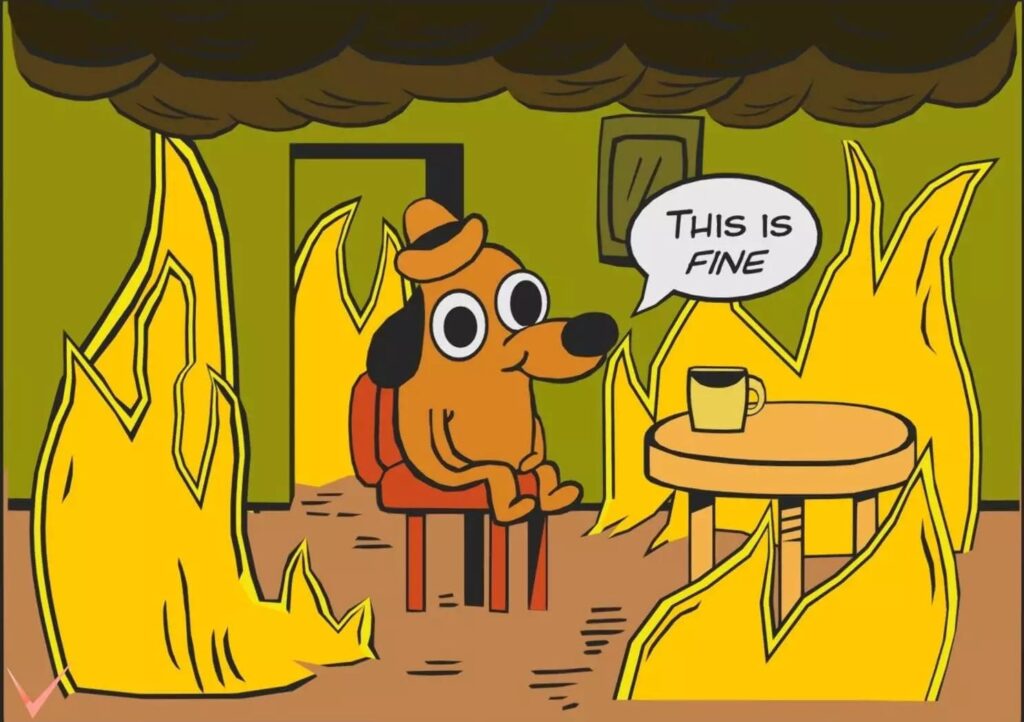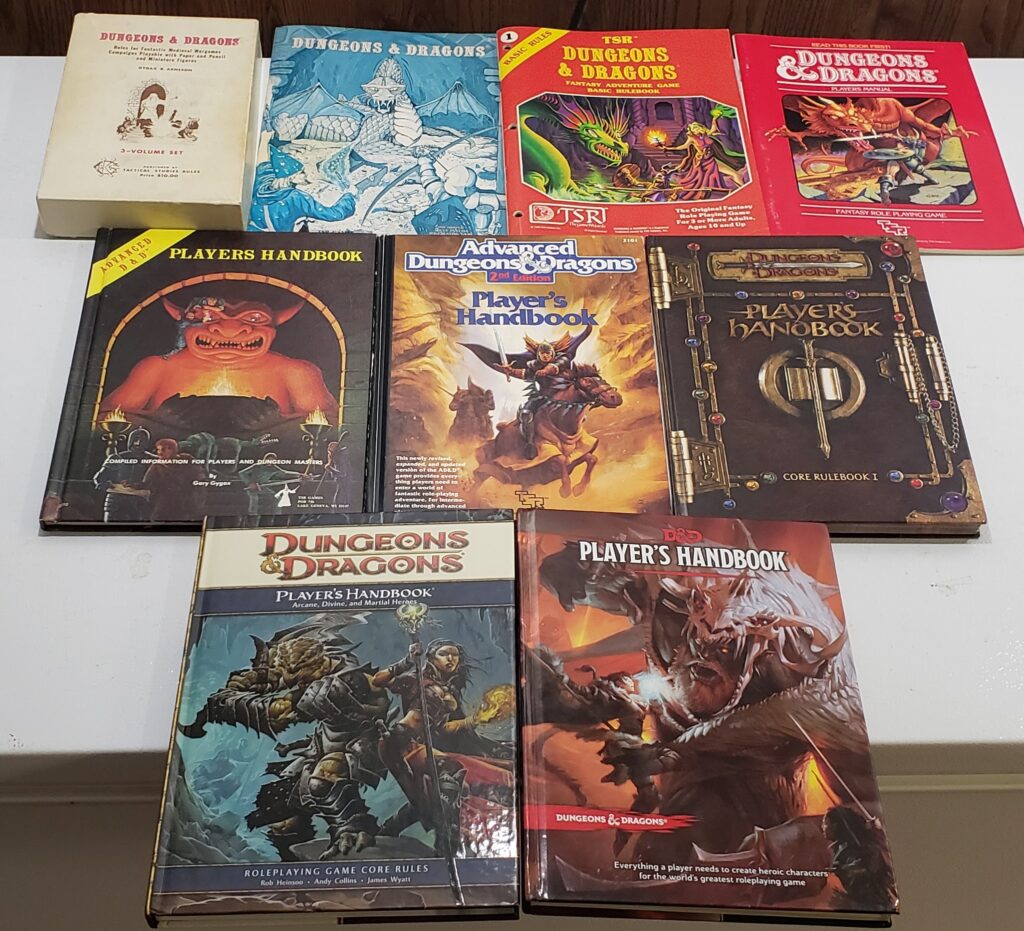LONG-TIME JUNGLE VISITORS will remember Ken Lacy, aka “The Fabulous Orcboy,” who wrote several posts and contributed to many battle reports and campaigns under the old version of this site. Ken is a 40K veteran, a literal scholar, and a true gentleman whom I have been proud to know for over 20 years. I’m thrilled that Ken has returned to wargaming after a lengthy hiatus, and honored that he has chosen to share this experiences and insights with the Jungle. –Kenton
AFTER MY DIVE back into competitive 40K (which you can read about starting here), I came to the realization that when it comes to the current edition, I’m… really not sold. In fact, after a weekend of gaming, I was positively underwhelmed.

Fundamentally, what I experienced was a rules-set that has (amazingly!) become even more complex and time-consuming than in previous editions of the game. This isn’t inherently a bad thing – younger me would have loved the extra rules crunch! But older me with more limited time doesn’t want to be constantly learning new rules every time I go and game—and not just the new rules that come with every minor ‘update’, but also every one of the dozens and dozens of different rules interactions that make 40K so complex.
And this is the “slimmed down” and newly streamlined 10th edition I’m experiencing! Games Workshop has always, always, always made their main games systems more bloated from month to month, and then “reset” with a new game edition, but with a new edition that somehow always managed to preserve quite a few complexities from earlier editions. The “new and improved” 10e is perfectly in line with past practice.
Among other issues is that the current 10th edition is extremely objectives-focused, reminding me a great deal of the 2nd and 3rd edition Warmachine/ Hordes mission set-ups and rules. Granted, you can technically play the game without such a focus on mission objectives (although I did notice that even during my NovaCon 2023 weekend, in the non-tournament, narrative-focused event I was part of, abstract objectives were still a key part of nearly every game). Objective-focused mission design isn’t necessarily a “bad” thing!
But it means that every wargame starts to look identical:
- Set up along one or two edges of the table;
- Set up roughly 24″ inches apart;
- Set up within control range of one or two of the objectives, and within a move action of another one or two.
- Move into close range of your opponent immediately in order to contest or capture the ‘no-man’s land’ objective(s);
- Rinse, repeat.
- If you don’t move units up to contest those objectives, you’re basically conceding every game you play.
In such games, you can get your army almost entirely slaughtered, but still ‘win’ the game based on objective control in early turns… practically the very definition of a Pyrrhic victory, and implicitly encouraged in list design and game-play. Furthermore, the mission design means that every single army list in the game looks very similar, regardless of what faction or special rules they have. And they all play very similar, because the mission design massively incentivizes it.

This is… extremely unsatisfying from the point-of-view of a narrative or story gamer like myself. For example, how can you meaningfully distinguish between different unit makeups and faction designs if they all have to largely play the same? How can you have any realistic variation in gameplay if every game is functionally identical?
And how can you simulate a prolonged military campaign of the sort described in so much 40K fiction if every battle you fight, whether ‘victory’ or loss, plays almost the same way and commonly results in your forces being nearly destroyed? This is… substantially higher casualty rates and substantially lower strategic variety than pretty much any period in human history, and an order of magnitude more than in modern warfare.
I get that 40K isn’t trying to be at all realistic, but is “grimdark” just the default explanation for all this strategic and operational futility?
Sure, there are secondary objectives, but they’re more burden than variety – not only do they add more time-consuming complexity to the game experience, they are inherently less significant in standard games. And yeah, there are different mission types, but their core set-up and table-layout are very repetitive, mission after mission.
At least in the narrative campaign at NovaCon, this wasn’t always the case: my second game of the campaign featured a very unbalanced set of mission objectives, and those objectives not only had game effects, but could be destroyed! And yes, I understand this isn’t ideal for a competitive game, but then we get to a core, fundamental problem: 40K is very, very badly designed if you’re trying to do competitive play.

At its core, despite now being in its tenth official edition, 40K still retains a key structural inequity: the gameplay remains an I-Go-You-Go system, where one side’s entire army gets to take their action while the opposing player just spectates.
Alternating activations like in Bolt Action or Infinity might be more ‘fair’ for competitions… but that would require GW to actually design a new rule-set, instead of constantly kludging together a slightly different arrangement of the same basic ruleset they threw together for 40K in 1987, which was a very slight modification of their existing Fantasy Battle rules from 1983, which were just a modest variant of the I-Go-You-Go rulesets in use by historical wargamers during the 1970s…. which is a system that attempts to simulate the inability of pre-modern armies to rapidly deviate from their core battle plan.
If only they could come up with a set of rules that better emulates skirmish or squad-level combat, in a setting with far better communication systems in place than the pre-modern battlefield!
Oh wait, they have in fact already designed alternate unit activation rules: for Lord of the Rings (a very robust and AWARD-WINNING skirmish system) and Kill Team (also solid, if sometimes a bit wonky).
GW already knows that their core game system has this design flaw, and have created two EXCELLENT alternative rules sets, but ultimately have chosen not to change 40K’s turn-based activation rules… maybe because they’ve become so beholden to their existing (and stagnant) fan-base that they don’t want to risk alienating them?
In other words, Games Workshop insists on sticking with a core set of game mechanics that have shown their limits repeatedly for well over 40 years.
And although they’ve made a few improvements (simplified statlines, simplified to-hit rules, simplified to-wound calculations), so much else in the rules is just tweaks to special rules, tweaks to terrain, tweaks to vehicles, tweaks to units and models, in order to compensate for a fundamental imbalance that is absolutely core to the rules-set.
And then these tweaks get undone (“nerfed”) or retweaked, or written out of the ruleset altogether, just to be re-introduced a few years later. All the while, the faction lists continue to grow and the rules interactions between all the tweaks and special rules keep getting more and more messy and contradictory and exploitable, until the next edition “resets” things that then inevitably get more complex again.

Oh, and the faction lists. Now there’s a mess of Games Workshop’s own design. We could go on for days and days… and while I love the creativity and world-building, they’ve managed the rules bloat so incredibly poorly, especially when it comes to unit and rules interactions.
Seriously: just include some robust ally rules, collapse similar units together under a single listing, provide unit-modification options so people can recreate existing units… all things GW largely refuses to do, instead piling complexity upon complexity… perhaps so they can keep milking their existing fan-base for the price of a new codex or new rules-set or new update?
And this leads to the next issue. The awful I-Go-You-Go mechanic is one of the very few core 40K rules elements that Game Workshop have insisted on retaining! I’ve played 40K since the original Rogue Trader days, and GW has been happy to change virtually every other core aspect of the rules.
For example, over the course of 10 editions, there have been at least 15 or 20 different rules for how terrain functions – something that seems rather core to the game experience!
There have been at least a half-dozen different ways that line-of-sight rules function; again, something that seems rather core to the game experience!
There have been well over a dozen different ways that melee combat can be initiated (Charges! Assaults! Fixed distance! Dice rolls!), which models can participate, and how that combat is resolved. Again, this seems rather core to the game experience!
There have been at least half-a-dozen different rules/ statlines for the MOST BASIC WEAPON IN THE 40K UNIVERSE, the humble bolter.
There have been at least three different, largely incompatible ways in which the benefits of armor (armor saves) are determined when being damaged by a variety of space fantasy weapons. I can go on!
By comparison, other games that have been around as long as 40K (such as D&D, the obvious comparison), have made changes that are far more incremental… and usually sustained from edition to edition, even including the radical departure that was D&D 4E.
Although the statlines have been simplified and the numerical values have been tweaked, the core melee mechanic of D&D 5th edition is still nearly identical to that of the first. Armor functions the same, and in most cases has had the exactly same defensive bonus over multiple editions. Weapons also have had virtually the same damage profile and similar statlines for decades.
This is true for other games (like Battletech) as well – the new editions clean up the existing rules, clarify ambiguities, and scrap (or make optional) complexity and bloat that built up in prior editions of the rules. This means that you’re not shedding casual gamers whenever you put out a new edition to the game!
Casual gamers can still use their existing knowledge base in the newer editions, with very few tweaks needed to continue to enjoy the game… which in turn increases exposure and continues to grow the fanbase, etc.

40K refuses to do this. It has kept the least effective part of the rules intact, but is constantly changing nearly every other part of the rules-set, leading to inevitable rules-bloat, needless complexity, seemingly arbitrary changes to units and abilities and even CORE RULES, the constant re-tweaking of those same rules…
For example, in the middle of a game at NovaCon, I learned that the free PDF rules I had downloaded just a few weeks prior from GW’s website had ALREADY been ‘updated’ on their company app, directly affecting what my Sisters of Battle units could do in the game!
Then there’s the regular redesign of core game mechanics (often in the middle of a single edition of the game, as well as between editions)… just a week or two after NovaCon, Games Workshop released an “update” that completely altered large chunks of the 10e gameplay, and the ways in which many specific units and armies functioned.
Guys, this isn’t a computer game where you can ‘push out’ patches that automatically install the new mechanics and just run in the background. In a table-top wargame, the human beings at the table have to know, and understand, all these mechanics in order to implement them. Thinking of your game as being readily ‘patched’, might be the wrong paradigm.
In fact, for those of you keeping track: that’s MULTIPLE design elements that GW have taken from massively successful wargames like Warmachine/Hordes (sarcasm alert) – copying not only the “balanced” mirrored objective-based games, but retaining the I-Go-You-Go turn mechanics, refusing to restructure and collapse down a massive and ever-growing faction list, making constant minor changes to core rules mechanics… and also constant and rolling rules “updates”, a stunningly awful idea which Games Workshop has apparently embraced with gusto!
What an absolutely brilliant method of driving out casual gamers and radically increasingly the cost-of-entry and learning curve for new players!

Then there’s the seemingly arbitrary complexity, down to the level of specific models! After a weekend trying the new 10th edition rules, I had largely gotten comfortable with how the Sisters of Battle function. It helps, of course, that I have had plenty of prior experience in wargaming and in 40K. But even if the Sisters units have the same name, and similar load-outs, individual units operate markedly differently from earlier editions.
Partly this is because the deliberate complexity in the 40K rules is extremely granular and hyper-specific: after reviewing and describing the five games I’ve written up in the Diary entries here on the Jungle, I realize to my chagrin that I’ve failed to remember or use at least one of the extremely often niche special rules that are part of every unit I fielded.
For example, I did not remember that Dominion boltguns are Assault weapons with Rapid-Fire 2, as opposed to the standard Rapid-Fire 1 (not Assault) boltguns carried by nearly every other Battle Sister, meaning +50% more shots for the Dominions, thus encouraging Dominions to keep moving and firing at high volume.
Exorcists have a 6″ aura that improves Leadership, so there are benefits to keeping other units near them. Novitiates hit with greater accuracy when their targets are within control range of an Objective.
Some of these rules I recognize as former world-building ‘fluff’ subsequently given in-game mechanics. And so much of it seems both arbitrary and also very corner-case. It gives 40K the miniature-by-miniature detailed special rules of a skirmish game that plays with just a handful of models… but in a company-scale wargame with dozens of miniatures in coherent units… combined with all the other chunkiness already noted.

And while all this could theoretically be attributed to incompetence or insularity on the part of the design team, GW has a long enough history that it’s clearly the result of premeditated malice. After all, their sales and marketing strategies are deliberately predatory, and their carefully cultivated player base is quite intentionally monolithic in terms of its demographics, in order to more easily market to and extract money from.
(In the next part of this already-long post, I’ll talk about how 40K is not particularly inclusive to younger, female, or minority gamers… like, you know – me, my daughter, my students, or most of my friends… and at a certain point, it’s clear that casuals and demographically…er… “fringe” players are not wanted.)
All of which makes the decision easy for me: my enjoyment of 40K will be greater if I focus on the parts that I can enjoy on my own; to wit, as a modeling and painting hobby, occasionally to play collectively with a pre-existing group of close friends, and not as a shared social activity with acquaintances and like-minded strangers…
Which is a sad conclusion to draw about an interactive tabletop wargame. I have many boxes of unpainted models that I can enjoy working through for years to come, and while I might still purchase the occasional GW kit here and there, I will never do so again at full price if I can help it: why should I be loyal to a company as predatory as GW? I enjoy alternative sculpts of 40K units and characters, and I’m happy to support independent artists, so that’s almost certainly where the bulk of my (note: limited) future 40K purchases will be.
Because I did enjoy some parts of this narrative campaign at NovaCon, I’ll likely consider doing something similar in the future… but will prioritize campaigns that use other rules-sets (like Stargrunt or One Page Rules) or perhaps play other games systems that are more gamer friendly and still widely played.
For example, at this NovaCon I ran into Wilson, an old friend from our mutual 40K competition years (now decades past), and he reignited my interest in the wargame Infinity. Beautiful models, skirmish-level games with lower entry costs, and a rich and growing backstory? Younger and more inclusive player base than 40K (yes, granted – low bar)? Rules-set that gets refined and improved from edition to edition, and is not a bloated and ever-changing mess? Wilson became a 40K refugee over 15 years earlier, and never looked back. I don’t really see any reason not to follow him.

Now, it feels in many ways that I’m writing an epitaph, so I’ll just note that after dipping my toes back in the 40K gaming experience at NovaCon, GW has not lost a regular customer – because I honestly haven’t been a regular GW customer in a long, long time.
I already had stopped both pickup and tournament 40K gaming some time ago, for all the reasons I’ve articulated in this diary entry, but the hype around 10e excited me enough to try again… only to definitively realize that I had made the right decision to ease out of the tabletop gaming side of the 40K hobby all those years back.
I’m sure there are still plenty of loyal 40K gamers and customers out there, so the hobby is not going to vanish overnight. The “model-railroading” future I predict for 40K (which I’ll discuss next time) is still a good forty years or more down the line.
I’m likely to be struck by the 40K modeling itch again in the future, and whether that involves tweaking the Sisters a little, or adding some decorative elements to my (still unfinished!) Immolators and Exorcists, I’m happy to engage in some more counter-grimdark programming.
But I suspect my next hobby year is going to be a re-exploration of systems like Infinity, as well as diving back into more Battletech. There are so many options nowadays for my finite hobby time, and when it comes to social forms of gaming (like tabletop wargames), it’s been made obvious after NovaCon that 40K dramatically falls short in nearly every way that matters to me.
It’s only just nostalgia, lore familiarity, and existing investment in miniatures that are keeping me connected to 40K, and, well… that’s the definition of another term from micro-economics.
